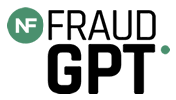
… I am very worried about the issue of the Superfinanciera, I think that they can open a complicated Pandora’s box for us, there is not much to do because the Super is already on top of it, all that remains is to pray and hope that it is not caught …
Relevance 81%
The message portrays very suspicious behavior as the person is scared of what the regulatory body might find and prays that they don’t notice anything wrong. According to Donald Cressey’s fraud triangle theory, this person would be under a lot of pressure and could be tempted to hide a dishonest act to avoid being fired.




